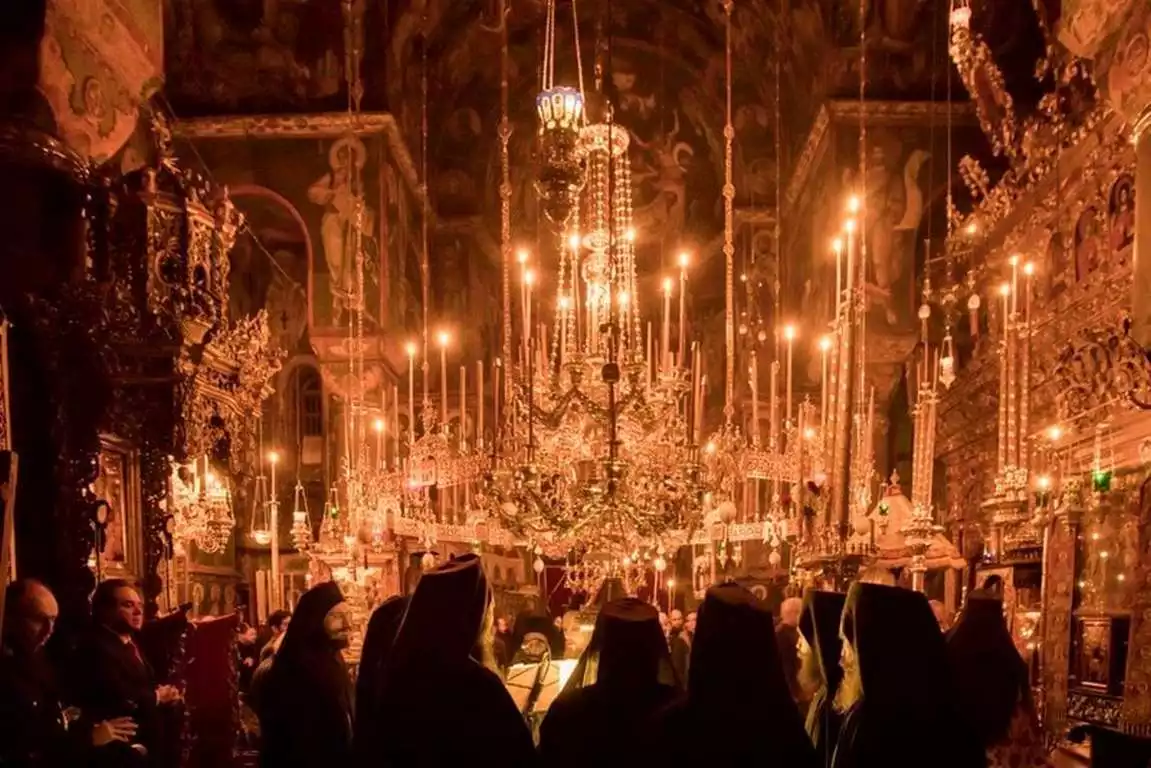
Monasticism, a distinctive and venerable aspect of religious life, particularly in Catholicism, Orthodoxy, and Coptic Christianity, entails a commitment to asceticism and spiritual contemplation. Central to this way of life is the renunciation of worldly pleasures and pursuits, in favor of devoting one’s life entirely to spiritual work. Monastic individuals, often known as monks or nuns, typically live in monasteries, cloisters, or convents, under a set of specific religious vows and communal rules.
Etymological and Historical Analysis
The term ‘monasticism’ derives from the Greek word ‘monachos’, meaning ‘solitary’. Initially, monastic life was indeed solitary, with individuals known as hermits or anchorites living in isolation to pursue spiritual enlightenment. This practice dates back to the 3rd century, with St. Anthony the Great commonly acknowledged as the first Christian hermit. Over time, monasticism evolved into a more communal way of life, as exemplified by St. Benedict of Nursia’s rule in the 6th century, which laid the foundation for Western monasticism.
Historically, monasticism has played a crucial role in preserving education and culture, particularly through the Dark Ages in Europe. Monasteries became centers for learning, scriptoriums, and repositories of knowledge. In the Eastern Christian traditions, including Orthodoxy and Coptic Christianity, monasticism developed unique characteristics, often emphasizing hermetic life and the mystical aspects of Christian spirituality.
Monasticism in the Bible
Although the specific term ‘monasticism’ is not found in the Bible, the concept of a devoted, ascetic life is present. Figures such as John the Baptist, who lived an ascetic life in the wilderness, embody monastic principles. Jesus Christ’s teachings, especially the Sermon on the Mount, also reflect values central to monasticism, such as poverty, chastity, and obedience.
In the Old Testament, Elijah and Elisha, prophets who lived apart from society and dedicated their lives to God’s service, foreshadow monastic ideals. The Psalms, often attributed to King David, also express a deep yearning for a solitary communion with God, resonating with the monastic pursuit of spiritual intimacy.
Monasticism in Mount Athos
Mount Athos, a peninsula in northeastern Greece, stands as a monumental testament to Orthodox Christian monasticism. Since its inception in the 9th century, it has been a haven for monks seeking a life of prayer, asceticism, and solitude. Known as the “Holy Mountain,” Mount Athos is unique in its administrative status; it operates almost as an autonomous monastic state within Greece, governed by its own monastic community.
The monastic tradition on Mount Athos is deeply rooted in the hesychastic practice, which emphasizes inner quietude and the continuous prayer of the heart. This tradition, which dates back to the early Christian hermits, flourishes in the monasteries of Mount Athos, where monks engage in a rigorous daily schedule of prayer, work, and contemplation. The communal life in these monasteries is structured around the Divine Liturgy, prayer services, and communal meals, all carried out in silence and reverence.
Mount Athos is home to 20 main monasteries, each a repository of Orthodox Christian art, theology, and history. These monasteries are adorned with exquisite icons, manuscripts, and religious artifacts, many of which are centuries old. The architecture of Mount Athos, characterized by its Byzantine influence, adds to the spiritual atmosphere, with monasteries often perched on cliffs overlooking the Aegean Sea.
The Holy Mountain’s monastic community is a living symbol of the continuity and resilience of Orthodox monasticism. It has been a spiritual lighthouse for the Orthodox world, attracting monks and pilgrims from all corners of the globe. In Mount Athos, monasticism is not just a relic of the past; it is a vibrant and living tradition, continuing to inspire and guide those on the spiritual path.
The Influence and Legacy of Monasticism
The influence of monasticism on Christianity and the broader world is profound. In Catholicism, monastic orders like the Benedictines, Franciscans, and Dominicans have played pivotal roles in shaping the Church’s spiritual and intellectual life. These orders have been instrumental in the preservation and dissemination of Christian doctrine, culture, and education throughout history.
Orthodox monasticism, with its center at Mount Athos in Greece, has preserved ancient Christian traditions and practices. It serves as a beacon of Orthodox spirituality, attracting pilgrims from around the world. Similarly, Coptic monasticism, deeply rooted in the deserts of Egypt, has maintained a unique spiritual heritage and has been a source of inspiration for Christians globally.
In all these traditions, monasticism’s commitment to prayer, contemplation, and community life has had a lasting impact on Christian spirituality. Monasteries have served as centers of spiritual renewal, theological reflection, and cultural preservation. They have been sanctuaries of peace and learning, offering guidance and support to the wider community.
Monasticism remains a vibrant and integral part of Catholic, Orthodox, and Coptic Christian traditions. Its legacy is not only in its historical contributions but also in its ongoing role as a wellspring of spiritual depth and discipline. Monasticism continues to challenge and inspire the faithful, calling for a deeper engagement with the divine and a more profound understanding of the Christian life.
References
- Dallas Baptist University. An Overview of Ancient Christian Monasticism.” Accessed December 21, 2023. Dallas Baptist University.
- Greek Orthodox Archdiocese of America. Monasticism in the Orthodox Church.” Accessed December 21, 2023. Greek Orthodox Archdiocese of America.
- MDPI. “Monasticism and Its Impact on Christian Tradition.” Accessed December 17, 2023. MDPI.
- Metropolitan Museum of Art. “Monasticism in Western Medieval Europe.” Accessed December 21, 2023. Metropolitan Museum of Art.
- Oxford Academic. “Studies in Monastic Spirituality.” Accessed December 21, 2023. Oxford Academic.
- ScholarWorks at WMU. “A Study of Monastic Life and Philosophy.” Accessed December 21, 2023. ScholarWorks at WMU.
- University of York. “Monastic Research Bulletin.” Accessed December 19, 2023. University of York.

